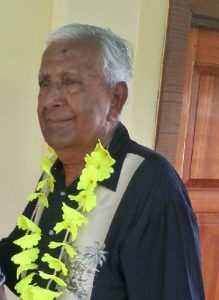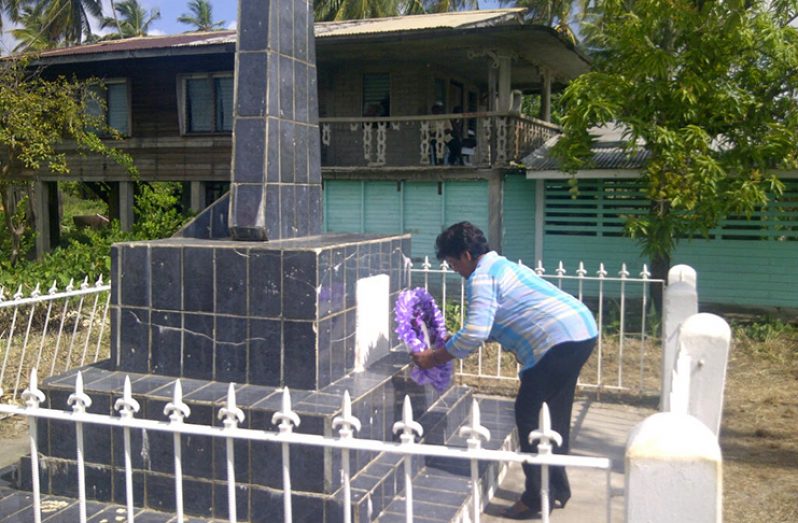Remembering the five slain martyrs
ON September 29, the five Indian immigrants who were viciously killed during the Devonshire Castle Uprising in 1872 were remembered. In honour of their memory, a monument was built at Cabbage Dam Devonshire Castle in Region Two. The monument serves as a reminder of the struggles of the Indian foreparents.

The Pepperpot Magazine caught up with an old historian Isahack Basir, CCH who shared his knowledge on the Devonshire Castle Uprising. The 84-year-old historian related that the Uprising has become part of Essequibo’s history.
Unveiling the story, elder Basir said the indentured labourers were killed because they protested against harsh and inhumane conditions. Speaking on the history he said the labourers were recruited by the white planters due to the high demand for sugar and the lack of workforce/labourers. Due to the acute labour shortage, plantation owners found it exhausting to find persons from other countries to work on the plantations.

On May 5, 1838, he said Indians were brought to Guyana to work on the plantations as Indentured labourers operating under the indentured system with specific obligations and contractual agreements. During the time on the plantation they were given poor wages, they had to work for incredibly long hours and were even flogged when tasks were not completed. Although the conditions were harsh, Basir said that the workers were not allowed the freedom to represent their interest in the courts.
Due to the intense hardship, the labourers began to strike and stood their ground, but instead gunshots were fired.

During the Uprising, seven male planters were injured and five were killed. Those that died were Kaulica, Beccaroo, Maxidally, Baldeo and Acukloo. These fallen heroes had lost confidence in the estate management and as such had retaliated. Although they had lost their lives they had brought freedom to other indentured labourers who were facing challenges.
Every year around September 29 various organisations, including the Regional Administration and the Indian Arrival Committee (IAC), remember the fallen heroes with a wreath-laying ceremony.


.jpg)











